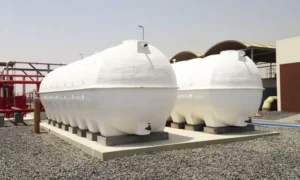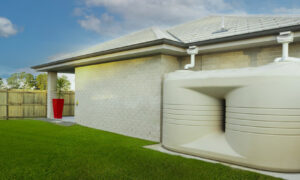Increasing numbers of homes are building water storage tanks for rainwater collecting and water saving. Water storage tanks are typically small and buried below. However, visible tanks are a bold statement. There are many benefits to having a water tank on your property, and this is just one of them.
Should you put up a water tank? If that is the case, you can put water above or below ground. Both types of tanks are viable solutions; picking one will depend on the user’s specific situation. However, it would help if you weighed the benefits and drawbacks of each tank before making a final decision.
Underground Water Tanks
Underground water tanks are frequently used for industrial and domestic purposes.
Benefits
A water storage system that takes up less space is beneficial in the following ways.
· Low Profile
If you bury your tank, you can keep more valuable land above ground. Lawns, driveways, and other practical uses are possible for such areas. Modular buildings have been placed on top of an underground tank in some circumstances. In most cases, nobody will even notice that you have a water tank.
· Keep The Temperature Constant
Insulation protects underground tanks from extreme temperatures. The tank is guaranteed to keep a consistent temperature all year round.
Disadvantages
There are a few drawbacks to installing underground storage tanks.
· Costly
The first drawback is the price. Costs associated with digging a hole for an underground tank to be installed must be factored in. The next step is to add a pumping system and fortify the tank. It is also necessary to pave over and fill in some regions.
· Tough to Sustain
The tank itself may also develop fissures. It can be challenging to locate them once the tank has been fitted. Furthermore, underground tanks cannot be placed in just any soil. One example is clay-rich soil.
Above Ground Water Storage Tanks
A cheaper option is to install an aboveground water tank.
Benefits
You can save costly excavation and reinforcement by installing an aboveground tank.
· Simpler To Maintain
Because it is not buried, an aboveground tank is easier to inspect and fix in case of a problem. Any damage to the tank, such as cracks, will be easily visible after installation. Because it is easy to get to, repairing the tank will keep the bank intact.
· Aesthetics
Some homeowners might object to having a tank in plain sight because they view it as an eyesore. However, the visual appeal of an aboveground tank can be exploited. It can be disguised to fit in with the design of your home and yard.
Disadvantages
Aboveground tanks pose unique dangers that can be mitigated through routine inspections.
· Hard To Maintain Temperature
In the winter, water in storage tanks may freeze. The summers are blisteringly hot there, too. A common difference between underground and aboveground tanks is the size. Due to these circumstances, aboveground tanks cannot keep water at a consistent temperature. It is why they work better as a backup water supply in times of crisis.
· Government Regulations
Aboveground storage tanks are subject to strict controls from the government. Zoning laws should be followed as well. Guidelines for secondary containment, theft, vandalism prevention, and spill control must also be observed.
Conclusion
Many homeowners choose underground water storage tanks because of their added security layer. Aboveground tanks, however, are widely used because of their low price and simple installation.



































